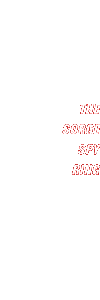|
|
|
|
|
 |
|
There were lots of black-and-white pictures: a five-man column -- surrounded by soldiers pointing rifles -- with their hands on the napes of their necks; when I would narrow my eyes, they'd look like black-and-white butterflies; the head of a chubby member of the Rote Kappelle, with an asymmetrical face: nose slightly on the left side, right eye hardly opened and seemingly asleep, mouth kept shut with effort, as if there was a spring of blood behind the feeble lips -- I just knew from his face that his hands (swollen wrists, bloody, burning trenches under the cuffs) were handcuffed; a picture of General Montgomery standing, arms akimbo, turned sideways, looking at the upper-left corner of the page, with the timeless beret parallel with his gaze: General Montgomery's doppelganger, just the head, looking at me with odd pensiveness, as if painfully aware that he could never be General Montgomery; a row of blindfolded people in white in front of the ready firing squad and a smiling officer, his right arm raised, pointing at the upper-right corner of the picture. And, near the end, there was Sorge -- "at the outset of his mission in Japan" framed by a door behind his back, standing legs apart (left foot NW, right foot NE) in a dark trenchcoat, one hand pocketed, the other somewhat clenched, holding a purse or a camera case; and his head: fiendish ears, large and ill-shaped; lips shut tight, as if his teeth were biting the inside of his lower lip; the wide base triangle of his nose, its top angle connected, by two deep furrows, with two dark dots in the corners of his mouth; lightless twin-holes, at the bottom of which were his eyes; and the black-inked helmet of hair. The picture was obviously retouched: Sorge's anxiety was burdened with someone else's curtained body. One could see the sharp cut at the verge of his collar, where his head, guillotined in a shadowy laboratory, was attached to a headless trenchcoat -- plus an inexplicable excess of neck-flesh on the left side. But I believed that Sorge was in that trenchcoat. I believed that he was about to enter the door-apparition behind his back. I believed in the totality of that picture, I believed in the apparent, and I trusted books. I was ten.
|
|
|
|
|
NEXT >>
|
|